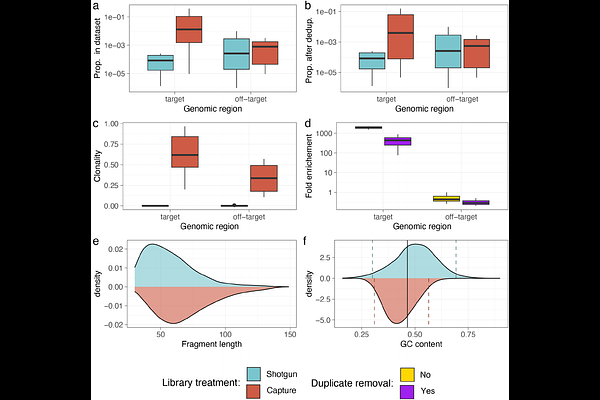A minimal hybridization capture system for the parallel enrichment and cost-effective detection of ancient human pathogens

A minimal hybridization capture system for the parallel enrichment and cost-effective detection of ancient human pathogens
Kocher, A.; Seguin-Orlando, A.; Clavel, P.; Louvel, G.; Jonvel, R.; Tzortzis, S.; Signoli, M.; Costedoat, C.; Orlando, L.
AbstractThe preservation of ancient DNA in archaeological remains enables identification of past disease agents. However, pathogen DNA is typically highly diluted by host and environmental DNA, limiting detection. Here, we present a proof-of-concept study using in-solution hybridization capture to improve detectability of a pre-defined set of 12 pathogens. We validate the method by detecting Yersinia pestis, the plague agent, in six individuals from 17th and 18th century French plague cemeteries with minimal sequencing. Expanding our probe set to target biomarkers of virtually any pathogen of interest offers a powerful tool for tracking the prevalence of infectious diseases in ancient populations.